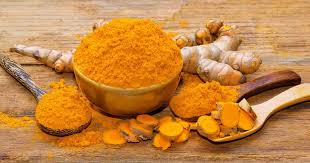Turmeric & Reduction in Joint Pain
Posted by Phil Heler, MD on November 23, 2018It appears that turmeric has genuine health benefits. It is a powerful antioxidant and has anti-inflammatory, antimicrobial and anticancer properties.

I have recently written an article on glucosamine and chondroitin regarding joint health and today I am continuing the same theme.
Considering many pharmaceutical prescriptions are relatively expensive, and with side effects, the focus on more natural solutions to pain management is never more relevant.
What is Turmeric?
Turmeric is something many of us have in our kitchen cupboards and it has recently received a great deal of medical interest.
You might be familiar with its strong pigment and I, for one, can certainly say that I have inherited yellow hands for the day either through washing up after a curry or accidentally handling a spoon that has dropped into the curry sauce!
However, it is this yellow pigment that gives turmeric its inherent medical value.
Curcumin Has Health Benefits
The yellow pigment in turmeric is called curcumin which is a plant polyphenol, and this is where the key interest lies.
It appears that curcumin has genuine health benefits. It is a powerful antioxidant and has anti-inflammatory, antimicrobial and anticancer properties.

Turmeric (Curcuma longa) is a herbaceous perennial flowering plant of the ginger family and is grown throughout India and Asia and Central America where it has traditionally been used as a medicinal herb for thousands of years.
It’s underground root system (or rhizomes) are the richest source of curcumin. When processed, roughly 5% of the turmeric root comprises curcuminoids. About 80% of this is specifically curcumin.

This extract is then dried, and the turmeric powder is then extracted and made into capsules, teas or tablets.
Curcumin Extract
Curcumin content is usually purified and typically standardised to contain at least 95% curcumin.
In its natural state, curcumin is very poorly absorbed in the human digestive system where it is rapidly metabolised and excreted.
As such curcumin is not readily bio-available to us. This problem has been resolved by mixing it with black pepper extract which acts as a bio-availability enhancer. This increases bio-availability by 200%!
Recent studies have shown that curcumin has beneficial effects on joint health by reducing inflammation and oxidative stress.
Reducing Inflammation
Arthritis is the main chronic joint condition that affects many of us as it impairs our daily living activities and decreases the quality of life.
In both rheumatoid arthritis (RA), which is an autoimmune disorder, and osteoarthritis (OA), which is associated with long-term mechanical damage; an inflammatory environment in the joint leads to the breakdown of both cartilage and bone, giving rise to disease symptoms.
One of the key aspects of arthritis is systemic inflammation and many of the current pharmaceutical options are expensive and have undesirable side effects as mentioned earlier.
Several studies have shown anti-arthritic effects of curcumin in human with osteoarthritis (OA) and rheumatoid arthritis (RA). In one randomised double-blind placebo-controlled study 40 subjects with mild to moderate knee OA were assigned curcuminoids.
Subjects experienced significant improvements in pain (but not stiffness) and reduced oxidative stress (this was measured in their blood serum)
The anti-inflammatory properties of curcumin
The anti-inflammatory properties are important for many reasons. Inflammation has been identified in the development of many chronic diseases and condition.
These diseases include:
- Alzheimer’s disease (AD)
- Parkinson’s disease
- multiple sclerosis
- epilepsy
- cerebral injury
- cardiovascular disease
- metabolic syndrome
- cancer
- allergy
- asthma,
- bronchitis,
- colitis,
- arthritis,
- renal ischemia,
- psoriasis,
- diabetes,
- obesity,
- depression,
- fatigue,
- and acquired immune deficiency.